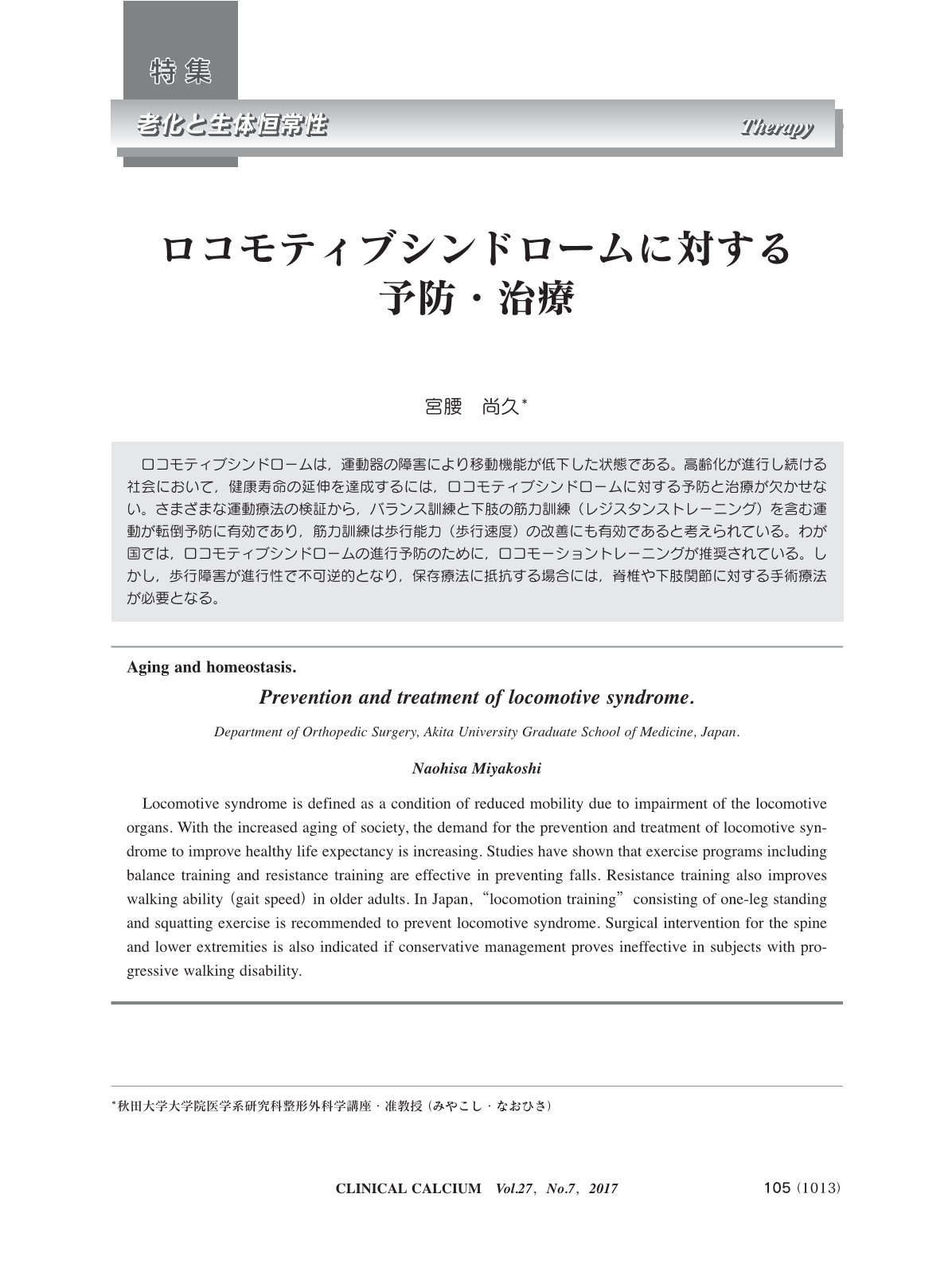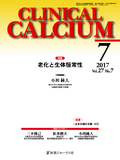Japanese
English
- 有料閲覧
- Abstract 文献概要
- 1ページ目 Look Inside
- 参考文献 Reference
ロコモティブシンドロームは,運動器の障害により移動機能が低下した状態である。高齢化が進行し続ける社会において,健康寿命の延伸を達成するには,ロコモティブシンドロームに対する予防と治療が欠かせない。さまざまな運動療法の検証から,バランス訓練と下肢の筋力訓練(レジスタンストレーニング)を含む運動が転倒予防に有効であり,筋力訓練は歩行能力(歩行速度)の改善にも有効であると考えられている。わが国では,ロコモティブシンドロームの進行予防のために,ロコモーショントレーニングが推奨されている。しかし,歩行障害が進行性で不可逆的となり,保存療法に抵抗する場合には,脊椎や下肢関節に対する手術療法が必要となる。
Locomotive syndrome is defined as a condition of reduced mobility due to impairment of the locomotive organs. With the increased aging of society, the demand for the prevention and treatment of locomotive syndrome to improve healthy life expectancy is increasing. Studies have shown that exercise programs including balance training and resistance training are effective in preventing falls. Resistance training also improves walking ability(gait speed)in older adults. In Japan, “locomotion training” consisting of one-leg standing and squatting exercise is recommended to prevent locomotive syndrome. Surgical intervention for the spine and lower extremities is also indicated if conservative management proves ineffective in subjects with progressive walking disability.



